1. How Real Is This Orbital Blockbuster?
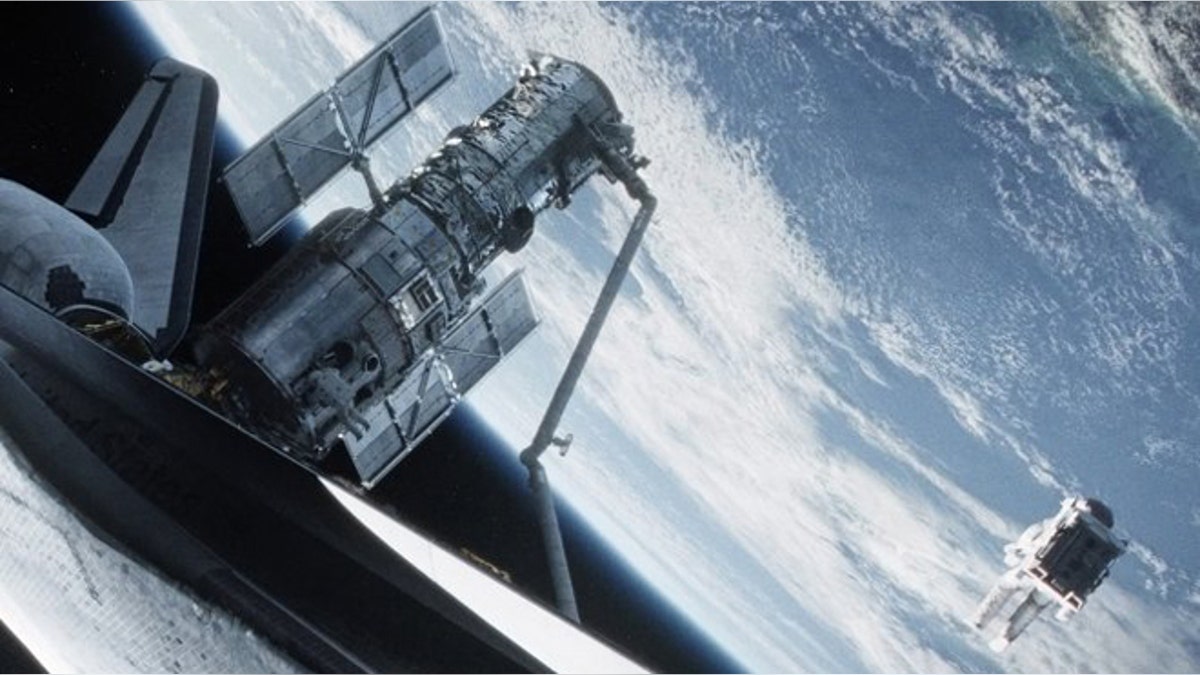
Director Alfonso Cuarón's visually stunning film "Gravity," in theaters today, is already being heralded as one of the year's best movies. Sandra Bullock and George Clooney star as astronauts whose mission goes spectacularly wrong when a cloud of orbital debris shreds their shuttle, cuts off communication and leaves them stranded in space. (Warner Bros. Pictures)
Director Alfonso Cuarón's visually stunning film "Gravity," in theaters today, is already being heralded as one of the year's best movies. Sandra Bullock and George Clooney star as astronauts whose mission goes spectacularly wrong when a cloud of orbital debris shreds their shuttle, cuts off communication and leaves them stranded in space.
These details have already been revealed in the film's trailers, but what the previews can't convey is the impressive sense of authenticity and verisimilitude that director Cuarón brings to the big screen. Thanks to a brilliant visual design and strategic use of 3-D effects, the movie feels like being in space.
That sense of authenticity also applies to the film's depiction of the specifics of an actual NASA space mission. It's clear that the filmmakers did their homework. The movie is careful to stay within the realm of plausibility demanded by the genre of hard science fiction.
But just to be sure, we asked former NASA astronaut Leroy Chiao -- a veteran of three shuttle missions, four space walks and a six-month stint on the International Space Station -- to help us separate the science from the fiction.
Warning: Several significant plot spoilers dead ahead
2. Orbital Debris Causes … Complications

The crisis in the film is precipitated when the Russians blow up one of their own satellites, triggering a chain reaction that sends a cloud of lethal debris toward our heroes at around, oh, 17,000 mph. Chiao says the dangers of such a scenario are quite real and have been studied extensively. "Just in recent history, the Chinese conducted an anti-weapons satellite test," Chiao says. "They blew up one of their old weather satellites, which created a bunch of debris." Could such an incident really set off a chain-reaction that wipes out everything in orbit? "It's not implausible, but it's unlikely," Chiao says. "Of course, if you have orbital debris, it can damage satellites or other spacecraft and potentially cause them to break up in turn. But the thing is, satellites are actually spaced pretty far apart. To get a cascade or chain reaction is pretty unlikely." http://news.discovery.com/human/science-movies-to-avoid-on-date-night-130816.htm (Warner Bros. Pictures)
The crisis in the film is precipitated when the Russians blow up one of their own satellites, triggering a chain reaction that sends a cloud of lethal debris toward our heroes at around, oh, 17,000 mph. Chiao says the dangers of such a scenario are quite real and have been studied extensively.
"Just in recent history, the Chinese conducted an anti-weapons satellite test," Chiao says. "They blew up one of their old weather satellites, which created a bunch of debris."
Could such an incident really set off a chain-reaction that wipes out everything in orbit?
"It's not implausible, but it's unlikely," Chiao says. "Of course, if you have orbital debris, it can damage satellites or other spacecraft and potentially cause them to break up in turn. But the thing is, satellites are actually spaced pretty far apart. To get a cascade or chain reaction is pretty unlikely."
Science Movies to Avoid on Date Night
3. Houston ... We Have a Good One For You
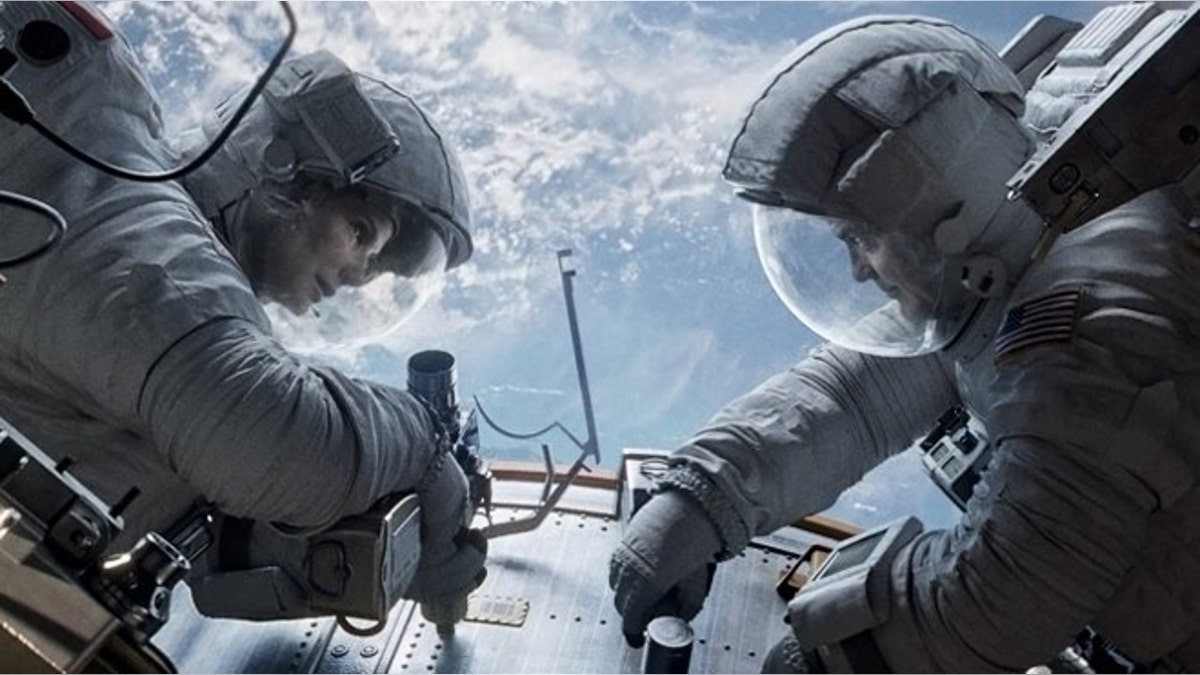
Before everything goes haywire in orbit, the spacewalking astronauts Ryan Stone (Bullock) and Matt Kowalski (Clooney) keep it loose by casually chatting, joking with ground control in Houston and even listening to music. Is it really that casual up in space? "Yeah, during spacewalks we're tied in with Houston and tied in with the crew inside (the shuttle), of course," Chiao says. "We have some light-hearted moments and we joke around a bit." BLOG: Huge Space Battle Rumbles Virtual Universe http://news.discovery.com/space/largest-space-battle-rumbles-virtual-universe-130729.htm (Warner Bros. Pictures)
Before everything goes haywire in orbit, the spacewalking astronauts Ryan Stone (Bullock) and Matt Kowalski (Clooney) keep it loose by casually chatting, joking with ground control in Houston and even listening to music. Is it really that casual up in space?
"Yeah, during spacewalks we're tied in with Houston and tied in with the crew inside (the shuttle), of course," Chiao says. "We have some light-hearted moments and we joke around a bit."
BLOG: Huge Space Battle Rumbles Virtual Universe
4. Can You Steal a Space Capsule?
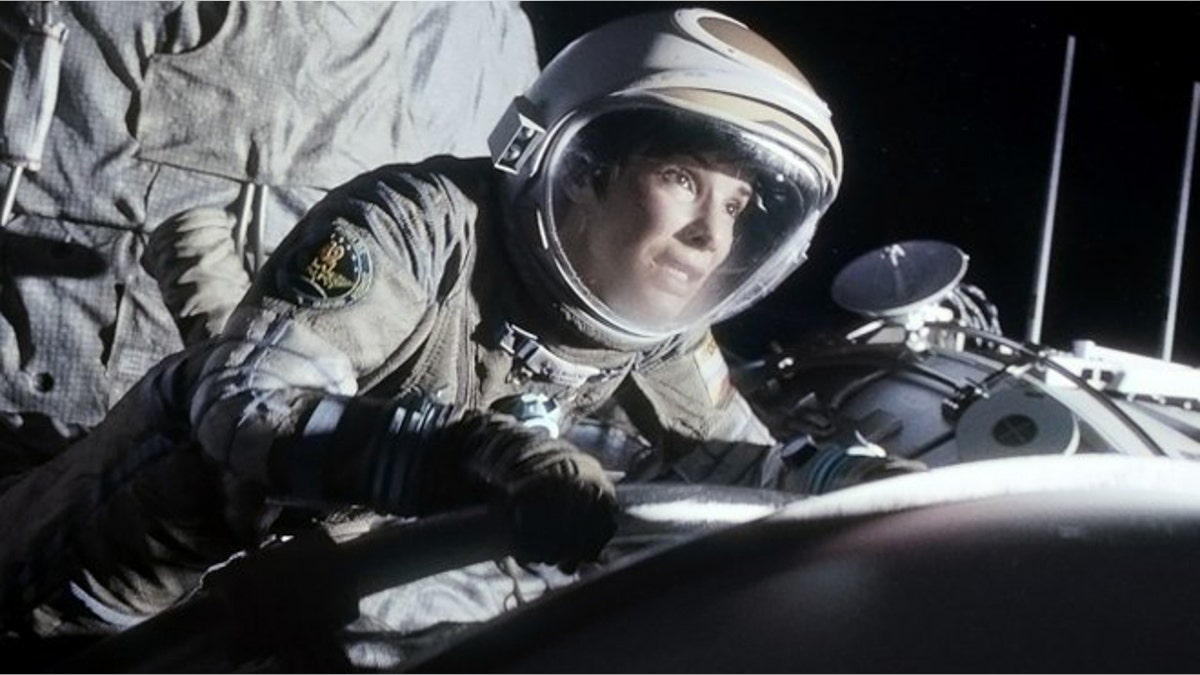
When the debris cloud destroys the astronauts' ride back home -- that is to say, the space shuttle -- Stone is forced to improvise by breaking into an old Soyuz spacecraft docked at the International Space Station. Chiao says such orbital grand theft is quite possible, but pretty tricky. "In order to open the outer door of the airlock you have to have the inner hatch closed and the air evacuated in between," Chaio says. "On the American airlock, you could open the pressure equalization valves, and there's a handle outside so you could definitely open the outer hatch. But the trick is, on the inside, the crew would have to have already closed that inner hatch. Otherwise you let all the air out of the station. If the crew configured it that way before they abandoned ship, then yes that could happen. It's physically possible." The Science and Fiction of Oblivion http://news.discovery.com/earth/the-science-and-fiction-of-oblivion-130424.htm (Warner Bros. Pictures)
When the debris cloud destroys the astronauts' ride back home -- that is to say, the space shuttle -- Stone is forced to improvise by breaking into an old Soyuz spacecraft docked at the International Space Station. Chiao says such orbital grand theft is quite possible, but pretty tricky.
"In order to open the outer door of the airlock you have to have the inner hatch closed and the air evacuated in between," Chaio says. "On the American airlock, you could open the pressure equalization valves, and there's a handle outside so you could definitely open the outer hatch. But the trick is, on the inside, the crew would have to have already closed that inner hatch. Otherwise you let all the air out of the station. If the crew configured it that way before they abandoned ship, then yes that could happen. It's physically possible."
The Science and Fiction of ‘Oblivion’
5. Correct Use of Jargon is Critical

After the orbital debris cascade knocks out communication satellites, Stone and Kowalski lose contact with ground control. They keep transmitting, though, in hopes that someone is listening. Each message begins with the rather haunting phrase, "Transmitting in the blind..." "Yeah, that's real phraseology and that's used in aircraft operations also," Chiao says. "You call 'in the blind' if you're not receiving them, but you think they might be receiving you. You're basically letting them know that you're not able to hear them." (Warner Bros. Pictures)
After the orbital debris cascade knocks out communication satellites, Stone and Kowalski lose contact with ground control. They keep transmitting, though, in hopes that someone is listening. Each message begins with the rather haunting phrase, "Transmitting in the blind..."
"Yeah, that's real phraseology and that's used in aircraft operations also," Chiao says. "You call 'in the blind' if you're not receiving them, but you think they might be receiving you. You're basically letting them know that you're not able to hear them."
6. Remember to Use Sunscreen (SPF 900)
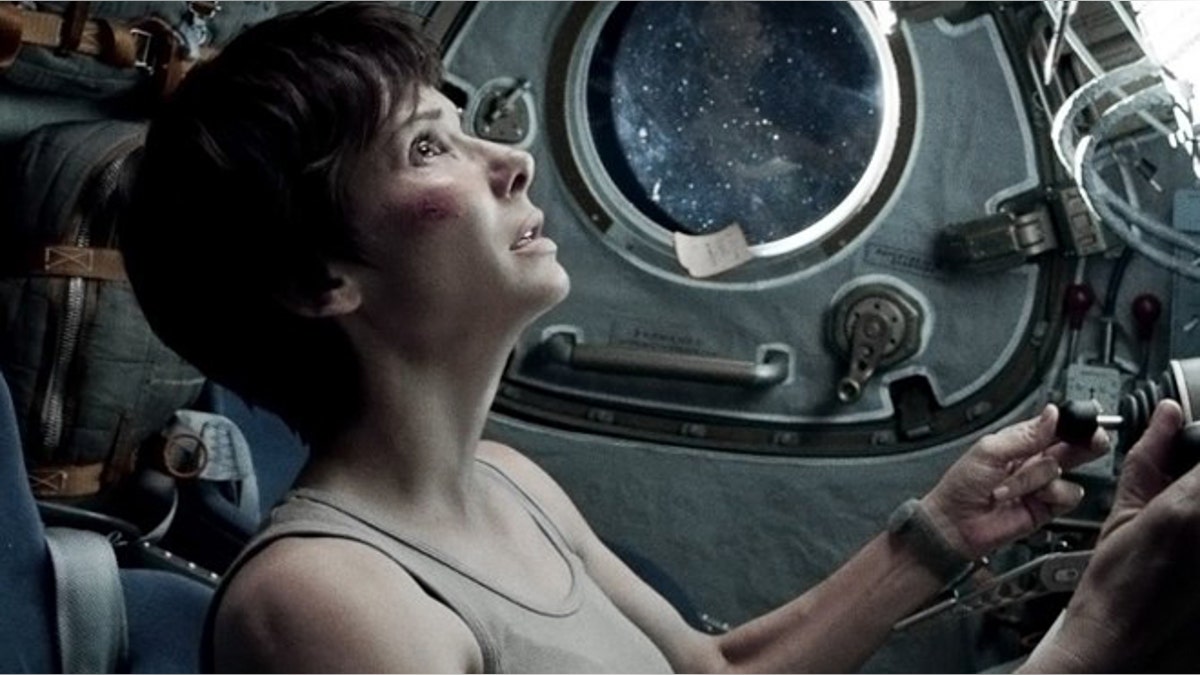
(Warner Bros. Pictures)
In one rather pretty scene, astronaut Stone ditches the spacesuit and catches her breath in a pressurized space vehicle, as sunlight streams in through a nearby porthole. But without a spacesuit or, say, the ozone layer, isn't dangerous to be exposed to direct sunlight in orbit?
"It depends on the window, but most windows are treated with UV protection," Chiao says. "For example, on the shuttle, all the windows had UV protection coatings on them. On the station, in the Russian segment, the small windows generally did not have UV protection, so they would be more optically pure. You'd get a pretty severe sunburn if you were in direct sunlight through one of those windows."
Into Reality: Top Star Trek Warp Speed Concepts
7. Just Read the Manual?

(Warner Bros. Pictures)
In fact, Stone uses the porthole sunlight to do a little light reading. Improvising inside Russian and Chinese spacecraft, she's able to get systems working by, apparently, reading the user manuals handily stored nearby. Really? You can fire up a spacecraft by reading the manual?
Surprisingly, Chiao says this is fairly accurate: "There are definitely paper procedures and books, certainly in the Soyuz and, I imagine, the Chinese spacecraft as well," Chiao says. "On the shuttle we had paper books. The problem would be, having not been trained, she may not know how to follow the instructions. She might not even know the language. But the books are there, and they're definitely used."
Chiao, by the way, would be prepared in such a situation: He speaks both Chinese and Russian.
Astronaut Gave 'Gravity' Advice To Sandra Bullock
8. When The Comsat Grid Goes Down, Try Ham Radio

(Warner Bros. Pictures)
A fairly relentless thriller, "Gravity" is short on light moments, but one of them occurs when Stone tries to raise ground control on a complex communications matrix … and gets a giddy Chinese farmer on ham radio. According to Chiao, that absolutely could happen, and has.
"On both the shuttle and ISS, we're normally going through satellites, but we have backup ways of communicating that are more direct-line," Chiao says. "We have a UHF radio that could go direct to the ground sites. The normal S-band radios can also go to ground sites. Just because you lose the satellites doesn't mean you lose comm."
And ham radio?
"Sure, on board the station we do have a ham radio and that's one way we organize conference sessions with schools and students," Chiao says. "As we fly from horizon to horizon, line-of-sight, we're able to answer questions for about 10 minutes or so. In fact, I remember hearing truck drivers talking to each other while we were over rural China. I tried calling down to them but they couldn't hear me."
VIDEO: What It's Like To Be An Astronaut
9. It's Scary Out in Space
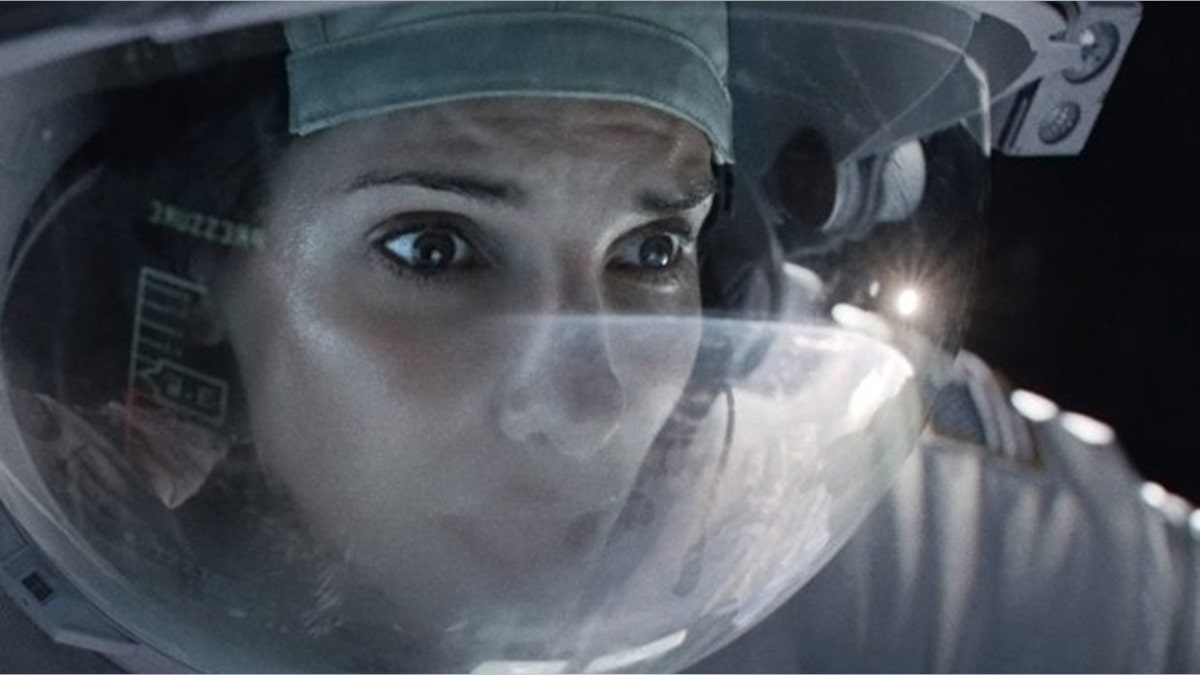
(Warner Bros. Pictures)
As the film's beginning title cards read, there's no oxygen in space, no air pressure, no sound. Life in space is impossible. The spacewalking sequences, in particular, underline just how vulnerable astronauts are.
Chiao says the trick is not to think about it too much. "You know, I've wanted to do this since I was a little kid, so getting into orbit and looking out that window for the first time was just such an emotional moment."
"Doing a spacewalk is a little different," Chiao says. "You're acutely aware that you're at higher risk. You're not protected by a pressure vessel and a spacecraft hull. If something goes wrong, your buddies inside, there's very little they can do to help you. It's a heightened sense of awareness. You're very careful and deliberate. You're always checking the tethers because the worst thing that could happen is you get unattached...."




















